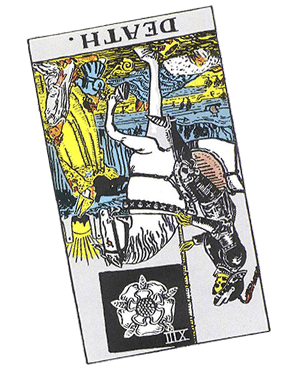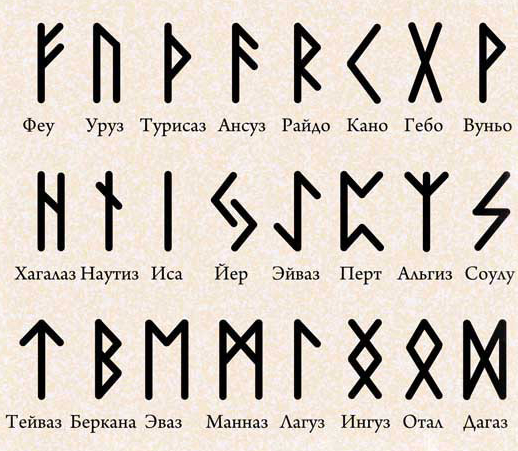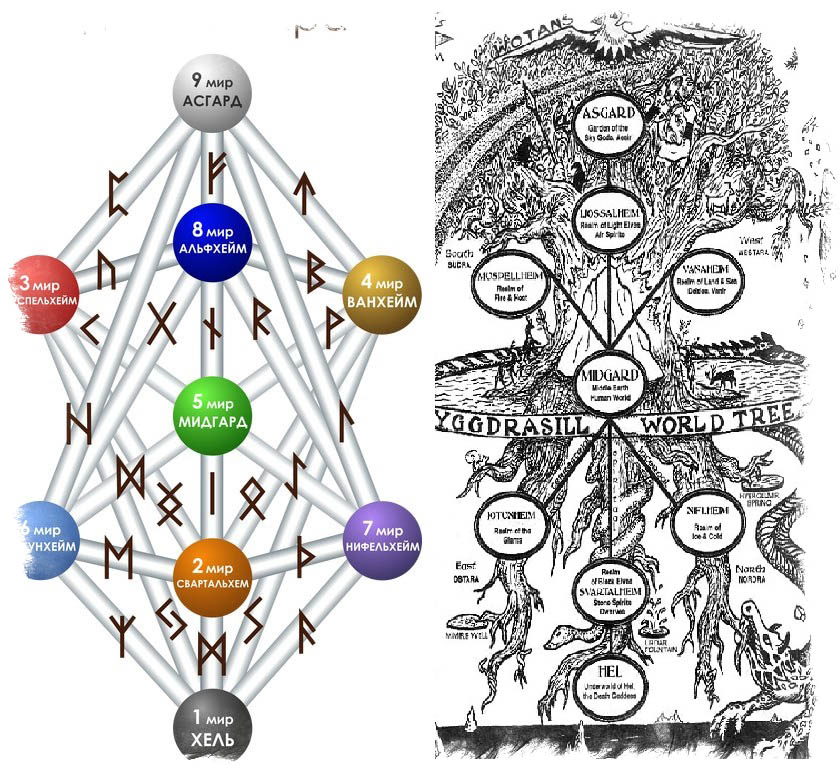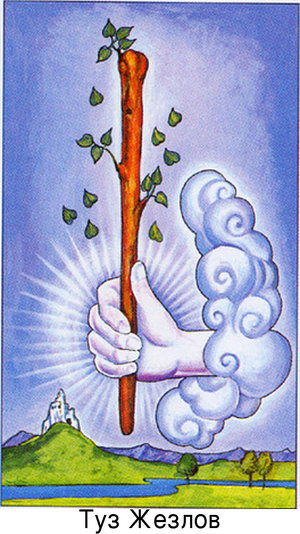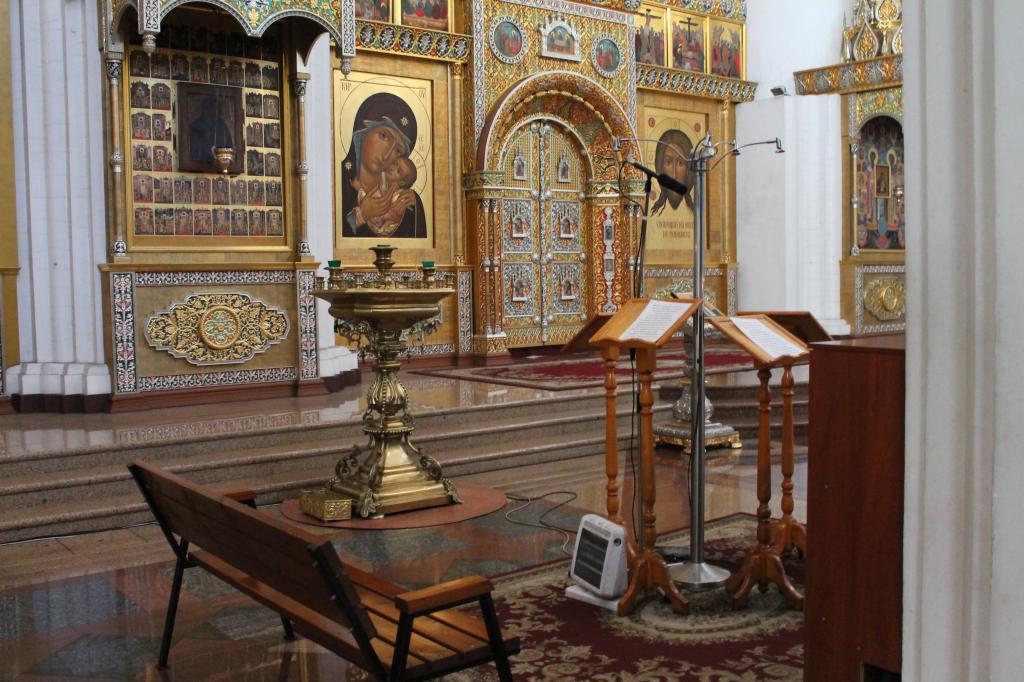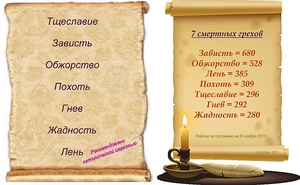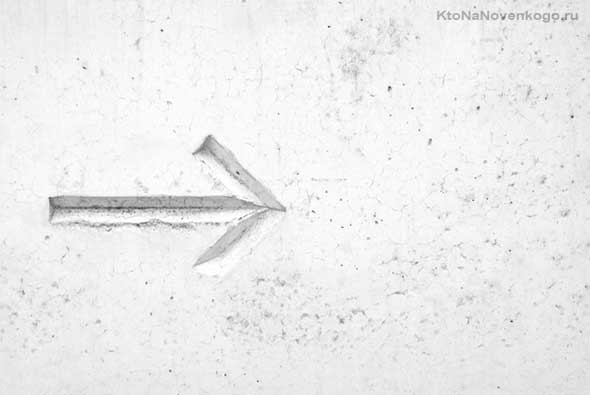The concept of Taoism is translated as a doctrine. The main ideas of the philosophy of Taoism
The doctrine of the Tao arose two thousand years ago in ancient China, where people worshiped the forces of nature and the spirits of their ancestors. The Chinese believed that everything in the world is in harmony and that if the balance between nature and people is disturbed, disasters arise: wars, floods, famines.
On the basis of understanding and striving for world harmony, the basic ideas of Taoism were laid.
There are not so many ideas in the philosophy of Taoism, but they reflect the whole essence of the doctrine.
There are only a few basic concepts for understanding, and these include:
- Tao - in the meaning of "path", that is, the path that a person must follow in order not to upset the balance between man and nature
- Tao - in the meaning of "being", "beginning",
- De - grace, strength, dignity, perfection
- U-Wei - inaction, or non-interference, leading to the realization of what is destined by being
The idea of \u200b\u200buniversal interconnectedness
The idea of \u200b\u200bthe relationship between things, phenomena and objects is one of the most important in Taoism.
Taoists believe that the world is a unity, all phenomena and objects are present in each other, they are closely interconnected and cannot exist separately. Things alone cannot be beautiful, ugly, large, small, dry or raw, cannot have taste, smell, color, everything is known only by comparison, that is, in a universal relationship.
Unity of the world
The second, fundamental idea of \u200b\u200bTaoism is to represent the world as a single substance - Tao.
No one created the Tao, it is limitless, dominates everything, invisibly, inaccessible to the senses, has no form, but gives everything in the world “de”, that is, a certain beginning, form, name that allows us to evaluate things and phenomena.
Tao is absolutely and faceless, de, in turn, is relative and has individuality. Both of these concepts cannot exist without each other: a Tao expresses itself in the world through de, and all phenomena in essence are the embodiment of being. When a thing finishes its journey, it returns to pristine, again becomes a Tao.
The cycle of matter
The idea of \u200b\u200bthe cycle of matter in nature is that any living creature, inanimate object, plant, and any other form of existence embodied on Earth after death will become a building material for the following life forms and natural phenomena. This cycle is endless and built on the idea of \u200b\u200bthe unity of the world and the matter of Tao.
Peace and Inaction
According to Taoism, the laws of nature, the course of history and the world order are unshakable and the will of a person cannot affect them, which means that a person must live in such a way as not to interfere with the flow of life, that is, remain at rest and inaction, called W-Wei. Wu-Wei cannot be regarded as a complete lack of activity. Rather, it is this force that will help to adhere to the natural course of the world order. To contradict Tao, as being, as a common path, means an empty waste of power, leading to death. The goal of U-wei is to understand and achieve Tao, as eternity, as the roots of the world order.
Holy emperor
The reverent attitude of the Chinese to the person of the emperor was reflected in Taoism. The idea suggests that the emperor is a sacred ideal through which de - grace emanates from ordinary people. The emperor in command should show inaction, since only calm rule will bring happiness to the people. The activities of the emperor entail a violation of harmony, which will manifest itself in various disasters. The "inconspicuous" ruler, acting in accordance with the Tao - the path of the universe, becomes truly great and the closer he is to the Tao, the more de will go over to him, his close associates and people.
The path to happiness in getting rid of the hustle and bustle
In order for a person to approach happiness, he needs to free himself from desires and passions. A knowledge of the truth can only be achieved by observing the laws of doctrine: strive to merge with the beginning, be obedient to the emperor. The path to de is accessible only through liberation from desires and passions.
Yield to each other
The idea of \u200b\u200bTaoism in an effort to yield to each other was born from Wu Wei - abstinence from activity. Activity is always a contradiction, an intervention, a descent from the true path to the side, and therefore a distance from the Tao and de. To concede means not to go against the order of the universe, but to keep up with it, without violating harmony.
And other "barbaric" states in southern China, the doctrine of immortality and magical practices that developed in the kingdom of Qi and the philosophical tradition of northern China.
Philosophical writings related to Taoism begin with the era of the Struggling Realms (Zhangguo) in the V century BC. e. , almost simultaneously with the teachings of Confucius. Tradition considers the founder of Taoism of the legendary Yellow Emperor Huangdi.
Another founder of Taoism is the ancient Chinese sage Lao Tzu. Taoist tradition attributed to him the authorship of one of the main books of Taoism - "Tao Te Ching." This treatise was the core around which the doctrine of Taoism began to take shape.
Another famous text of early Taoism is Chuang Tzu, authored by Chuang Zhou (369-286 BC), known by the name Chuang Tzu, in whose honor his work is named.
At the beginning of the II century BC e. Lao Tzu’s figure is being deified, a complex hierarchy of deities and demons is being developed, a cult is emerging in which fortune-telling and rituals that “drive out” evil spirits take center stage. The Pantheon of Taoism was headed by the Jasper Lord (Shang-di), who was revered as the god of heaven, the supreme deity and father of emperors ("sons of heaven"). It was followed by Lao Tzu and the creator of the world - Pan-gu.
The first Taoist schools
The design of religious Taoism occurred during the late Han Dynasty: Zhang Daolin (34 - 156) founded the Heavenly Mentors School 天师 and became its first patriarch. In the second half of the 2nd century, the prerequisite for the popularity of Taoism was the Uprising of the Yellow Bandages 184-204: Third Heavenly Mentor Zhang Lu was able to take control of the territory in the mountains of Sichuan, which became the first Taoist theocratic state. The Taoist state was defeated by Cao Cao's and ceased to exist.
Other Taoist schools appeared later. An important role in the development of Taoism was played by the schools of Maoshan (aka Shangqing) and Lingbao.
The literature (including Chinese) often discusses the possibility of borrowing the provisions of Taoism from Indian philosophy, or vice versa, the transfer of Taoism to India and the founding of Buddhism there. It also indicates the similarity with the Chinese philosophy of the Indian concept of the faceless Absolute, the emanation of which created the visible phenomenal world and to merge with which (to leave the phenomenal world) was the goal of the Brahmins. This question has been raised repeatedly in various Taoist schools. However, a detailed study rejects the direct borrowing hypothesis.
Lao Tzu could not bring to India a philosophy with which they were familiar there at least five hundred years before his birth. In its specific practical activities, Taoism in China was not much like the practice of Brahmanism. On Chinese soil, rationalism prevailed over any mysticism and pushed it to the periphery of public consciousness, where it could only persist. So it happened with Taoism. Although the Taoist treatise Chuang Tzu (4th-3rd centuries BC) states that life and death are relative concepts, the emphasis is on life and how it should be organized.
Mystical ideals in this treatise, expressed, in particular, in references to the fantastic longevity (800, 1200 years) and immortality that righteous hermits who approached the Tao can achieve, played an important role in the transformation of philosophical Taoism into religious Taoism. This is his main discrepancy with most religions: the pursuit of immortality among the Taoists replaces the pursuit of paradise among the followers of other beliefs.
Canon Formation
Taoism was further divided into two streams: Sun Jiang and Yin Wen schools, on the one hand, and Zhuang Zhou school, on the other.
The Decline of Taoism in the Qing Era
Taoism is now
Under Qing, Taoists were once again accused by Chinese zealots of strict classics of undermining traditional values, which supposedly resulted in the conquest of the country by “barbarians”. These scholars called for discarding Taoism and Buddhism as completely compromising false doctrines and returning to their own philosophical sources, which ultimately translates into the literary and social movement, called Han Xue, that is, "Han science", which in this case meant classical Confucianism. During the Taiping Uprising (1850), Taoist monasteries were devastated, which the leaders of the rebels explain as the need to “fight superstitions.” Taoist literature is driven out of library collections with such zeal that by the beginning of the 20th century. "Tao zan" remains almost in a single copy. Until the Xinhai Revolution (1911), and even later, traditionalist scholars never tire of subjecting Taoist philosophy to severe criticism as overly “contemplative,” paralyzing the will to fight, undermining the public morality and moral principles of the state. The eras of a tolerant and even benevolent attitude of the authorities towards Taoist speculation were replaced by periods of persecution until modern times. In the 1960s the practice of persecuting proponents of Taoism has been revived by figures of the "cultural revolution." By the end of the 1970s excesses of cultural heritage have largely ceased, although the relative rehabilitation of Taoism and Taoist philosophy (along with Confucianism and Buddhism) began only from the time of the official proclamation of reform (1978) by Deng Xiaoping. In Taiwan, Taoism has retained its influence and traditional institutions to this day. In China, the Baiyunsi Monastery in Beijing remains the most famous modern center of Taoism. The philosophizing in Taoist style in modern China continues, according to tradition, mainly in essay literature and poetry of the philosophical genre.
Teaching elements
The foundations of Taoism, Lao Tzu's philosophy are set forth in the treatise "Tao Te Ching" (IV-III centuries BC). At the center of the doctrine is the doctrine of the great Tao, universal Law and the Absolute. Tao is polysemous, it is an endless movement. Tao is a kind of law of being, of the cosmos, the universal unity of the world. Tao dominates everywhere and in everything, always and limitlessly. Nobody created it, but everything comes from it, so that, after completing the circuit, return to it again. Invisible and inaudible, inaccessible to the senses, constant and inexhaustible, nameless and formless, it gives rise to, a name and a form for everything in the world. Even the great Heaven follows the Tao.
To become happy, each person must embark on this path, try to know Tao and merge with it. According to the teachings of Taoism, the human microcosm is eternal as well as the universal macrocosm. Physical death means only that the spirit separates from the person and dissolves in the macrocosm. The task of man in his life to ensure that his soul merges with the world order of Tao. How can such a merger be achieved? The answer to this question is contained in the teachings of Tao.
The path of Tao is inherent in the power of Dae. It is through the power of Wu Wei Dao that is manifested in every person. This force cannot be interpreted as an effort, but on the contrary, as the desire to avoid all effort. U-wei - means "non-action", the denial of purposeful activity that runs counter to the natural order. In the process of life, it is necessary to adhere to the principle of non-action - the principle of U-wei. This is not inaction. This is human activity, which is consistent with the natural course of the world order. Any action contrary to Tao means a waste of energy and leads to failure and death. Thus, Taoism teaches a contemplative attitude towards life. Bliss is achieved not by one who seeks to win the favor of Tao through good deeds, but by one who, in the process of meditation, immersion in his inner world, seeks to listen to himself, but through himself to listen and comprehend the rhythm of the universe. Thus, the goal of life was interpreted in Taoism as a return to the eternal, a return to its roots.
The moral ideal of Taoism is a hermit who, through religious meditation, breathing and gymnastic exercises, achieves a high spiritual state that allows him to overcome all passions and desires, to immerse himself in fellowship with the divine Tao.
Tao manifests itself through everyday life and is embodied in the actions of trained people, although few of them completely "follow the Way." Moreover, the practice of Taoism itself is built on a complex system of symbolism of mutual correspondences and unity of the world of the common, cosmic, and internal, human. Everything, for example, is imbued with a single qi energy. A child is born from a mixture of the original qi (yuan qi) father and mother; a person lives only continuing to nourish the body with some external qi ( wai qi), translating it into an internal state through a system of breathing exercises and proper nutrition. Everything truly “great” is connected with the beyond, the Tao, which at the same time manifests itself instantly in things, phenomena, actions. The cosmic here is constantly projected onto the human and appears in a special vital "energy", the energy potential of both Tao himself and people who were able to fully comprehend it. The path of Tao itself is perceived as an energetic beginning, spiritualizing, for example, in Zhuang Tzu it is said: "He spiritualized deities and kings, gave birth to Heaven and Earth."
Political and Legal Thought of Taoism
The ideology of early Taoism reflected the views of the petty sovereign nobility and the community elite, their protest against the excessive enrichment of the rulers, the strengthening of the bureaucracy and the expansion of state activity. Having lost their former influence, these strata sought restoration of the patriarchal order.
The founders of Taoism sought to debunk the ideology of the ruling circles, and first of all, the official religious cult with its dogmas of "heavenly will" and "sovereign - the son of heaven", who bestow the laws of Tao on the people. Tao in the interpretation of the followers of Lao Tzu is an absolute world principle. The Taoists explained the flaws in society by the fact that people, having indulged in vain desires, moved away from their original simplicity, broke the natural bonds that held them together and instead rely on wisdom for knowledge. The reason for social turmoil is the transition from the initial merger of man with Tao to the development of his abilities and knowledge.
In the socio-ethical plan, the leitmotif of Taoism is the condemnation of pride, the preaching of medium prosperity and moderation.
The Dao de Ching reflected the widespread among the communal peasantry ideas about property redistribution in favor of the poor. The heavenly Tao, the canon says, “takes away the superfluous and gives it back to the one who needs it. "The heavenly Tao takes from the rich and gives to the poor what is taken from them."
Lao Tzu linked his hopes for the restoration of the natural simplicity of human relations with clever leaders from among the hereditary nobility who could see the "miraculous secret of Tao" and lead the people.
The wise sovereign, taught the Taoists, rules the country using the method of non-action, that is, refraining from actively interfering in the affairs of members of society. Lao Tzu condemned modern rulers for being too active, setting many taxes and prohibitive laws, and waging endless wars. "The best ruler is one that the people only know that it exists."
The main categories of Taoism
- Tao (道) is literally the "path", in Taoism - the being and change of the universe in the most general sense. Impersonal power, the will of the universe, which must correspond to the order of all things in the world
- Dae (德) is literally “virtue” or “morality.” Virtue given from above (from the Tao) does not have the characteristics of physical, power influence, in contrast to the Greek "arete". Grace, the tremendous spiritual power that Heaven endowed the ruler of China and which he could transmit to his subjects
- Wu-wei (無為) - literally “inaction” - an understanding of when to act and when to act
- Pu - literally “an unprocessed piece of wood” personifies the energy of objects untouched by nature, if simpler, then the simplicity of the soul, the soul of pu.
The components of Taoism
- Taoist philosophy
- Book of Changes, especially revered in Confucianism and Taoism
- Taoist doctrine of immortality, external alchemy, internal alchemy
- Taoist meditation
- Huantingjing - "Canon of the Yellow Yard"
- Shangqing - "School of Higher Purity"
Prominent figures in Taoism
- Huang Di - the legendary ruler of China and a mythical character, is considered the founder of Taoism
- Lao Tzu - the ancient Chinese philosopher of the 6th-5th centuries BC e., one of the founders of Taoism
- Zhang Daolin is the founder of the first sustainable Taoist organization (Five Rice Ladles) in the Han era
- Ge Xuan - the legendary Taoist, on whose works the Linbao tradition is based
- Ge Hong - a Chinese Taoist scholar and alchemist, grand-nephew of Ge Xuan, who wrote Baopu Tzu's encyclopedic work on external alchemy
- Ge Chaofu - grand-nephew of Ge Hong, founder of Lingbao School
- Kou Qianzhi - reformer of the Heavenly Mentors School, the first to achieve the proclamation of Taoism as the state religion
- Yang Xi - Taoist, Founder of Shangqing School
- Tao Hongqing - Taoist Encyclopedist Strengthening Shangqing School
- Lu Dongbin - the legendary patriarch, is included in the Eight Immortals
- Chen Tuan - the famous Taoist from Wudang Shan, which influenced public thought in China
- Zhang Sanfeng is a Taoist from Wudangshan Mountain who is considered the founder of several gymnastics systems, including Taijiquan
Taoism and other teachings
Taoism and Confucianism
Taoism, with its concept of non-action, has traditionally been in opposition to Confucianism, which preached to the sovereign and society. This confrontation was so deep that it was reflected even in the activities of Jesuit missionaries: for example, Matteo Ricci was in close contact with the Confucian elite and rejected Taoism as a pagan practice - while his opponent, Michele Ruggieri, argued for similarities between the concepts Tao and logo.
For the integration of the elements of Taoism into Confucianism, see Neoconfucianism.
Taoism and Buddhism
The first Taoist school to emerge from the study of Buddhist treatises was Lingbao School. Its founder Ge Chaofu adopted from Buddhism the idea of \u200b\u200brebirths in the five worlds and in a very simplified form elements of cosmology. At the same time, the Taoists did not abandon the practice of achieving immortality, however, they improved the concept of immortality, abandoning the literal interpretation of infinite stay in the same earthly body, and introducing other worlds for heavenly people - happy lands, islands of immortals, etc. From the Buddhist theory of rebirth, the doctrine of karma and retribution. Later Buddhist elements became familiar to Taoist schools, which also adopted Buddhist methods of meditation.
- The interaction of Taoism and Buddhism
- Historical Conflicts between Taoism and Buddhism
Taoism and modernity
References
Literature
- Bondarenko Yu. Ya. Ethics of paradoxes: [essay on ethics and philosophy of Taoism]. - M .: Knowledge,. - 62, p. ISBN 5-07-002544-9
- Wen Jian, Gorobets L.A. Taoism in modern China. St. Petersburg, 2005.160 s. ISBN 5-85803-306-6
- Klyucharyova O. Secrets of the Tao Universe - Ed. Science Press, 2006
- Kobzev A.I. Wang Yangming and Taoism // Tao and Taoism in China. M. Science. 1982, p. 80 - 106.
- Maslov A.A. Taoist symbols // China: bells in the dust. The wanderings of the magician and the intellectual. - M .: Aletheya, 2003, p. 70-82.
- Maspero A. Taoism. St. Petersburg: Science, 2007.
- Myshinsky, A. L. The problems of early Taoism in domestic historical and philosophical literature. Abstract of dissertation ... K. Philos. n Ekaterinburg, 1996.
- Stulova E.S. Taoist practice of achieving immortality // From the history of traditional Chinese ideology. M., 1984. S. 230-270.
- Tkachenko G.A. Taoism and the school of names in the tradition of ancient Chinese thought // Methodological and worldview problems of the history of philosophy of the East. Part I. M., 1996.
- Torchinov E.A. Alchemy and ritual in Taoism (to the formulation of the problem) // XVI Scientific Conference "Society and the State in China." Part 1. M., 1985. S. 96 - 101.
- Torchinov E.A. Taoism - St.P., 1999.
- Torchinov E.A. Taoist practices. SPb., 1999.
- Filonov S.V. Milestones of Russian historiography in the study of Taoism // Russia and the East: The main trends in socio-economic and political development: Abstracts for the All-Russian Scientific and Methodological Conference / Yaroslavl State University named after P. G. Demidova. Yaroslavl: Publ. Yaroslavl State University, 1998.S. 64-66.
- Filonov S.V. Early Taoism: a search for methodological integrity // Religious Studies (Journal). - 2009. - No. 3. - S. 56-69. - ISSN 2072-8662.
- Shkurkin P.V. Essay on Taoism: Taoism. Ba Xian // Bulletin of Asia. 1925. No. 53. S.121-125.
- Balfour, Frederic Henry, tr. The Divine Classic of Nan-Hua; Being the Works of Chuang Tsze, Taoist Philosopher (Kelly & Walsh, 1881).
- Barrett, Rick. Taijiquan: Through the Western Gate (Blue Snake Books, 2006). ISBN 1-58394-139-8.
- Cane, Eulalio Paul. Harmony: Radical Taoism Gently Applied (Trafford Publishing, 2002). ISBN 1-4122-4778-0.
- (1990) Whence the Pronunciation of Taoism?». Dictionaries 12 : 55–74.
- Carr, David T. & Zhang, Canhui. Space, Time, and Culture (Springer, 2004). ISBN 1-4020-2823-7.
- Chan Wing-tsit. A Source Book in Chinese Philosophy (Princeton, 1963). ISBN 0-691-01964-9.
- Chang, Stephen T. The great tao (Tao Longevity LLC, 1985). ISBN 0-942196-01-5.
- Demerath, Nicholas J. Crossing the Gods: World Religions and Worldly Politics (Rutgers University Press, 2003). ISBN 0-8135-3207-8.
- Dumoulin, Heinrich, Heisig, James W. & Knitter, Paul. Zen Buddhism: A History (India and China) (World Wisdom, Inc, 2005). ISBN 0-941532-89-5.
- Eliade, Mircea. A History of Religious Ideas, Volume 2. Translated by Willard R. Trask. Chicago: University of Chicago Press, 1984.
- Fasching, Darrell J. & deChant, Dell. Comparative Religious Ethics: a narrative approach ISBN 0-631-20125-4.
- Fisher, Mary Pat. Living Religions: An Encyclopaedia of the World’s Faiths (I.B. Tauris, 1997). ISBN 1-86064-148-2.
- Goodspeed, Bennett W. The Tao Jones Averages: A Guide to Whole-Brained Investing (E. P. Dutton, 1983).
- Graham, Angus. Disputers of the tao (Open Court, 1989) ISBN 0-8126-9087-7.
- Hansen, Chad D. A Daoist Theory of Chinese Thought: A Philosophical Interpretation (Oxford University Press, 2000). ISBN 0-19-513419-2.
- Hucker, Charles O. China’s Imperial Past: An Introduction to Chinese History and Culture (Stanford University Press, 1995). ISBN 0-8047-2353-2.
- Jones, Richard H. Mysticism and Morality: a new look at old questions (Lexington Books, 2004). ISBN 0-7391-0784-4.
- Keller, Catherine. The Face of the Deep: A Theology of Becoming (Routledge, 2003). ISBN 0-415-25648-8.
- Kim, Ha Poong. Reading Lao Tzu: A Companion to the Tao Te Ching With a New Translation (Xlibris Corporation, 2003). ISBN 1-4010-8316-1.
- Kirkland, Russel. Taoism: the enduring tradition (Routledge, 2004). ISBN 0-415-26322-0.
- Kohn, Livia, ed. Daoism handbook (Leiden: Brill, 2000).
- Kohn, Livia. The Daoist Monastic Manual: A Translation of the Fengdao kejie (New York: Oxford University Press 2004)
- Kohn, Livia & LaFargue, Michael, ed. Lao-tzu and the tao-te-ching (SUNY Press, 1998). ISBN 0-7914-3599-7.
- Komjathy, Louis. Handbooks for Daoist Practice. 10 vols. Hong Kong: Yuen Yuen Institute, 2008.
- Kraemer, Kenneth. World Scriptures: An Introduction to Comparative Religions (Paulist Press, 1986). ISBN 0-8091-2781-4.
- LaFargue, Michael. Tao and Method: A Reasoned Approach to the Tao Te Ching (SUNY Press. 1994) ISBN 0-7914-1601-1.
- Little, Stephen and Shawn Eichman, et al. Taoism and the arts of china (Chicago: Art Institute of Chicago, 2000). ISBN 0-520-22784-0
- Mair, Victor H. The Columbia History of Chinese Literature (Columbia University Press, 2001). ISBN 0-231-10984-9
- Mair, Victor H. Experimental Essays on Chuang-tzu (Hawaii, 1983) ISBN 0-88706-967-3.
- Markham, Ian S. & Ruparell, Tinu. Encountering Religion: an introduction to the religions of the world (Blackwell Publishing, 2001). ISBN 0-631-20674-4.
- Martin, William. A Path And A Practice: Using Lao Tzu’s Tao Te Ching as a Guide to an Awakened Spiritual Life (Marlowe & Company, 2005). ISBN 1-56924-390-5.
- Martinson, Paul Varo. A theology of world religions: Interpreting God, self, and world in Semitic, Indian, and Chinese thought (Augsburg Publishing House, 1987). ISBN 0-8066-2253-9.
- Maspero, Henri. Translated by Frank A. Kierman, Jr. Taoism and chinese religion (University of Massachusetts Press, 1981). ISBN 0-87023-308-4
- Miller, James. Daoism: A Short Introduction (Oxford: Oneworld Publications, 2003). ISBN 1-85168-315-1
- Mollier, Christine. Buddhism and Taoism Face to Face: Scripture, Ritual, and Iconographic Exchange in Medieval China. (University of Hawai’i Press, 2008).
Welcome to the Tao of the Celestial Empire, or the so-called Chinese Taoism, from the labyrinth of this Eastern teaching, as well as from all life's troubles and problems, we will try to get out using the ideas, essence, principles and philosophy of Taoism, as one of the most famous religious teachings in the world .
What is Tao?
First you need to understand that the word tao means « beyond". Going beyond duality and any polarities is the union of masculine and feminine in man, life and death. And as the great Taoist Lao Tzu said - Tao is empty, but thanks to him everything exists.History of Taoism
It is generally believed that historically, Taoism originates from the rule of the Chinese emperors of the Chu Dynasty, where mystical shamanistic rituals and cults were already developing. And yet the real tradition begins with the legendary master Lao Tzu (The Wise Elder) of the 6th-5th centuries BC, who created the fundamental treatise Tao Te Ching.
And the word Tao can be translated as Absolute Knowledge, which can not be expressed in words, but you can still survive. And the word Dae is a way of being, or how to abide in such Absolute Knowledge. Tao drives all things, but which is beyond the concept of them.
The essence of Taoism
The essence of Taoism is that Tao is without form and color, there is no personality, and even “I” is not. Moreover, there are no efforts and goals either. There are no traditions and no temples, and there is no one to serve, no one and no reason - abide in emptiness and do not follow thoughts and phenomena, but simply observe and be a witness.
Understand that emptiness is the foundation of everything A Tao without form and without a name, but it is a support for everything, it is an extraordinary aspect that binds everything together. It’s just the universal order, and in the Tao usually do not build temples, and there are no priests and rituals - there is only a pure understanding.
Once a Taoist master Li Zi traveled with his student. Crouching by the road to eat, he saw a skull, and said to his disciple pointing to the skull: "Only he and I know that you were not born and you will not die." He also added that people do not know the truth and are just unhappy fools, and the skull and master know the truth beyond death and birth, and therefore are happy.
Way tao
Taoism as a religion teaches to be on the path and does not differ from the path, because all existence in itself is one, and we are part of it. Usually we are all taught as separate individuals, but what then is to be in harmony with those around us? Happiness is to be inextricable with the whole, this is the way of Taoism or simply Tao.
If you have an “I,” or even a concept of “I,” then you are not on the way. The concept of holiness in Taoism is to be in harmony with the one, to be one.
And the understanding of the Bible there is different - we all had parents and they, in turn, also had parents. And we get to Adam and Eve - and it turns out they were born of God. And who gave birth to God, because He must exist somewhere, because, at least, there must be a space for his existence or creative energy, vacuum or emptiness.
Is there God in Taoism?
Therefore, the main thing in Taoism is not God, but Tao - which includes God, if you want and everything that exists is simply Being or Unity. As soon as you consider yourself separate from the rest of the living and nonliving, then you are already separated from God.
Usually people delve into the past and the future, but this is just a measurement of time, and when you are one, you are connected in space with everyone and are beyond time. There is no suffering and sorrow in this Being, they arise when we are separated from the whole, when there is a "I".
Taoist Parable
One day, a king called a minister to him and said: "I want to be happy - take care of this, otherwise I will execute you." The minister replied that, probably, you need to find the shirt of a happy man and bring it. And for a long time he was looking for a happy man, but it turns out that everyone was unhappy, and the minister was saddened.And then someone told him that on the river bank someone constantly plays cheerful music on the flute at night. Then the minister went there and really saw a man playing enchanting music on a flute and asked him: “are you happy?”, He answered “yes, I am happiness”.
The minister was immensely happy and asked for a shirt. But the man was silent for a long time, and only then said that he did not have a shirt, he was naked. “Then why are you happy?” The minister asked.
The man replied: “One day I lost everything, including my shirt ... and became happy. I have nothing and I don’t even have myself, but still I play the flute, and the whole or the whole plays through me. You understand - I simply do not exist, I don’t know who I am, I am nobody and nothing. ”
The main ideas of Taoism
Sometimes the Tao is called the pathless path, there is only understanding. And the main idea of \u200b\u200bTaoism is that the ordinary person is constantly in thought, he constantly thinks of himself or something external and he just has no time to live, live a real life.
When a person is not one with everything around him, he is tense and constantly defends himself and fights for his survival. And if you correctly notice - this world becomes an illusion if we are not united. This is the main idea of \u200b\u200bTao.
Everything is an illusion that disappears when the observer or the cognizer arises. And when you are merged with everything, when you stand in the center of all being, you are the truth, and the truth is you. Sometimes awakened masters exclaimed: “ I am the truth».
How to gain enlightenment and Tao?
So, what Lao Tzu and the rest of the masters talked about - in order to know reality, you must be in a state of inaction, because, acting, you move away from yourself, from unity with Tao. You are not in contact with the outside; all bridges are burned.
In complete silence, without internal dialogue, for example, if you wash the floor - let it completely swallow you, if you cook, the same thing.
AND when you dissolve in what you do, your self disappears, this is the "enlightenment" in Taoism, also the principle of Tantra, that is, the continuity of being or consciousness in being itself, you can say whatever.
Our ego is never harmonious, it is separated from the whole being and this is the whole problem of mankind, with its wars and struggle for survival. Remaining inactive, the ego disappearsif you go, just go, if you dance, then just dance.
Being completely in the present moment, the inner depth, inner happiness will begin to penetrate into you - this is Tao, you are not there, you are dissolved.
Principles of Taoism
The main principle of Taoism is that true happiness can only be found in merging, when you are just as a witness - thoughts arise, you simply observe them. You watch them come and go, so you merge with them. Also with respect to the movements of the arms and legs - you make a movement and just observe.
At first, you will be distracted, but then the state will deepen, inner peace and joy will come. The Taoist principle of happiness - it does not need an external reason, taoism can always be happy, because happiness is all existence, all that Taoism does is happiness.
External happiness has its cause, and already in this misfortune, it is slavery from the external. Taoists beyond logic and reason. One of the main principles Tao is emptiness and when you are empty God enters youwhere the Devil cannot exist, but what can he do there, he will die out of boredom, because he needs power over man.
Emptiness is the main value
Look how wonderful Lao Tzu is talking about the emptiness - he says that it is not the walls of the room where you live that are useful, but the emptiness between the walls. After all, a person uses a room, not walls.Emptiness is the most valuable thing on the planet and it was not created by man, but by Being or Tao himself - after all, this is how eternity works, the way cosmos and all life are arranged. This is the famous void in Buddhism and Zen - this is the feminine aspect of everything.
If you practice Tantra, then this is its basis and principle of work. Even in the Old Testament there are hints that everything arises from emptiness. Take the story of Adam and Eve.
It is believed that a man or Adam was created first, but this idea from the fact that he is close to the earth, that's all. And God says to Adam - give Eve a name and he said: “She is my heart,” which means simply the mental or spiritual aspect.
The heart is feelings that arise, but are invisible to our eyes. The female principle is the principle of the internal. We call the innermost soul, and the body is our outer.
Philosophy of taoism
In the philosophy of Taoism, as you understand, there is no definite path, because if you go somewhere, every moment there is already a goal in itself. In Tao, you give up the past and the future, and from yourself as well.
There is no goal and no aspirations, it means surrendering oneself to unity. The Tao that can be spoken of is no longer genuine. After all, reality can be known only when the mind recedes.
The perfect swimmer becomes part of the river
He is the wave itself
Taoism arose in China in the 2nd half of the 1st millennium BC. Lao Tzu (born in 604 BC) is considered to be the founder of Taoism, but Chuang Tzu (369-286 BC) was his most important thinker.
According to legend, in his declining years, Lao Tzu decided to leave the Middle Kingdom and went to the West. When he passed through the border outpost, his boss urged Lao Tzu to leave a book in himself that would reflect the thoughts of the “wise old man” about the Way of the world and the Way of man in it. So a manuscript of 5000 hieroglyphs iodine with the name "Tao-de-ching" was born. This work, including verse 81, is the ideological foundation of Taoism.
At the center of the Taoist doctrine is the doctrine of the great Tao, universal Law and the Absolute. Tao dominates everywhere and in everything, always and limitlessly. Nobody created it, but everything comes from it, so that, after completing the circuit, return to it again. Invisible and inaudible, inaccessible, permanent and inexhaustible, nameless and formless, it gives rise to, a name and a form for everything in the world. Even the great Heaven follows the Tao (L.S. Vasiliev, p. 284).
Tao is the foundation of all things. Tao is both the basic substance and the eternal, natural and universal law of the spontaneous emergence and development of the Universe, man and society. As the mysterious integrity of the Universum, Tao is present in everything, but is not limited to anything single, is not cognized by reason and is not expressed in words. Tao also acts as a synonym for a single world whole.
Tao is an endless movement. Tao is a kind of law of being, of the cosmos, the universal unity of the world. The meaning of the hieroglyph “Tao” is a path, a road, a means, a way, an idea, a basis, to speak, to flow out, to keep a path out, to lead, to flow (Lao Tzu, p. 5, commentary by a translator).
Everything in the world is on the way, in and change, everything is fickle and of course. A person joins this movement and thereby comprehends the Tao, i.e., lives in harmony with the world. Taoism rejects any effort not only by the individual, but also by society.
Man, creating society and civilization, gave rise to many artificial things (which are not generated by Tao), began to depend on them, which led to the opposition of man and the world and its disharmony.
Tao is inherent in the good power of de (virtue), through which it manifests itself in the world, and the final forms of this manifestation (a variety of things) are considered as the embodiment or design of Tao.
The states characterizing Tao include the principles of tzu (self-esteem, spontaneity) and w-wei (non-action).
The principle of tzu zhan indicates that Tao is absolutely free, does not depend on anything else and follows only its own and nature. The principle of tzu zhan does not require any effort from a person to completely rest on their own natural rhythms. “Tzu zhan is nearby, she is in nature. It does not need to be proved logically. True, tzu zhan is simple: wherever you are, the nature of water is YAN down, the nature of fire is up. There is nowhere for a man to escape from this Juvenile truth; he eats it and warms it daily ”(A.E. Lukyanov, p. 124).
The principle of w-wei means the denial of purposeful activity that runs counter to the natural order of zi zhan. This is not inaction. This, which is consistent with the natural course of the world order. Any action contrary to Tao means a waste of energy and leads to failure and death.
Wu-wei is one of the characteristics of Tao. “By non-action the sky reaches purity, by non-action the earth reaches peace. With the merging of the inaction of both of them, the whole darkness of things develops. Indistinguishably, elusively, they come from nothing; indistinguishable, elusive, do not possess the image. All the darkness of things originates in non-action. Therefore, it is said: "Heaven and earth are inactive and do everything." (Taoist parables, p. 1).
In later versions of Taoism, the concept of “qi” (pneuma, ether), which is an analogue of the concept of Tao, appeared. By “qi” is meant the original primary substance of which all that is “composed”. Condensing and coarsening, “qi” becomes a substance, thinning - a spirit. In the intermediate state, “qi” is the vital energy and force dissolved in and absorbed by a person during breathing. This vital force also circulates through special channels (jing) in the human body. Its accumulation and proper circulation in the body is one of the most important tasks of Taoist breathing and gymnastic exercises of the qigong system.
In the VII-VIII centuries. under the influence of Taoism, monasticism and monasteries appear, which was alien to the principles of the original Taoism. At the same time, the tendency toward the dominance in the Taoist religious practice of psychotechnical contemplative methods is intensifying. The main thing begins to be given to the methods of internal harmonization, moral perfection and the practice of contemplation.
What is Taoism?
This question has long attracted the attention of Chinese scholars, but it is very difficult to give a short and clear answer to it, since “Taoism” is a very multidimensional and multi-valued concept.
In some sources, Taoism is called philosophy, in others - religion, in the third - philosophy, which gradually transformed into religion, in the fourth it is said that Taoism is not philosophy, not religion, but art.
Taoism is a Chinese philosophical and religious movement, which is one of the main "three teachings." It represents an alternative to Confucianism, in terms of philosophy, and Buddhism, in terms of religion. “Anthology of Taoist Philosophy.” Comp. V.V. Malyavin, B. B. Vinogradsky. M., “Partnership”, 1994 ..
The first mention of Taoism as an integral ideological formation appeared in the 2nd century. BC. It was called the “school of the Way and grace” and consisted of the fundamental theories of the treatise “The Canon of the Way and Grace”. Subsequently, the name of the doctrine of the School of the Way and Grace was reduced to the School of the Way (Tao Jia), which has survived to this day.
The basis of Taoism formed the mystical and shamanistic cults of the Chu kingdom of South China, the doctrine of immortality and the magical practices of the Qi kingdom, and the philosophical tradition of North China. The founders of Taoism are the Yellow Emperor Huangdi and the sage Lao Tzu. The main treatises are Dao Dzin and Chuang Tzu.
The term “Tao” (the path), which formed the basis of this philosophical and religious movement, turns out to be much wider than all the specifics of Taoism. It can be quite compared with the Confucian term "ju". Many confuse Taoism with neo-Confucianism, which is entirely explained by the presence of the same roots in these philosophical teachings. The fact is that early Confucianism could well be called nothing more than the “doctrine of Tao” (Tao Shu, Tao Jiao, Tao Xue). On the other hand, adherents of Taoism could be included in the Zhu category. These interactions of the two currents led to the fact that the term "adept Tao" is applicable to Taoists, Confucians, and even Buddhists.
But Taoist mystic-individualistic naturalism has a fundamental difference from the ethical sociocentrism of other leading worldview systems of ancient China. The heyday and the formation of "one hundred schools" was the starting point for the research of many scientists. He made them even think about the peripheral origin of Taoism (some claimed that Taoism comes from India). Not without Brahman and the Logos, which supposedly served as a kind of prototype of the Tao. This view contradicts the point of view, which speaks of Taoism, as a vivid expression of the Chinese spirit itself. This is precisely what many Russian scholars adhere to, led by the leading Taoist scholar E.A. Torchinov. They are inclined to believe that Taoism is the most developed form of national religion. E. Torchinov. “Taoism. The experience of historical and religious description ”. St. Petersburg: Andreev and Sons, 2nd edition: St. Petersburg: Doe, 1998.
The theme of transformation, creative metamorphosis of being is the central theme of Taoist thought. For Taoists, neither form nor formless are real. Or, as the Taoist books say, "emptiness cannot overcome ten thousand things." The true reality for Taoists is transformation itself. Taoists think in categories not of essences or ideas, but of relationships, functions, influences. For them, there is “nothing” in the world, but the connections between things themselves are undoubtedly real. There may be no truth at all. But the metaphor of truth, the innumerable reflections of reality, certainly exist.
So, the Taoist picture of the world is an infinitely complex, truly chaotic pattern of phenomena where there is no one privileged image, one “only true” idea. As Chuang Tzu wrote: “All the darkness of things is like a spread out network, and nowhere to find a beginning.” “Anthology of Taoist Philosophy.” Comp. V.V. Malyavin, B. B. Vinogradsky. M., “Partnership”, 1994.
Just as China itself (then the kingdom of Zhou) was divided, starting from the middle of the 1st millennium BC, into many separate kingdoms that were at war with each other, its culture also represented a picture of considerable diversity; there were several types of cultures, only later fused in the great synthesis of China.
The cultures of the north and south of China differed to the greatest extent from each other. If the north, which gave rise to Confucianism, is characterized by attention to ethical issues and ritual, a rational desire for a rational rethinking of the archaic foundations of civilization, then in the south the element of mythopoetic thinking dominated, the ecstasy of shamanistic cults flourished. And Taoism, which apparently matured in the bosom of the southern tradition, nevertheless combined the exalted archaic of the south and the rationality of the north. The first gave him content, the second endowed it with a form, providing the philosophical way she created for mastering reality to express vague and unconscious creative potentials. Without a southern tradition, Taoism would not have become Taoism, without a northern tradition, it could not have spoken about itself in the language of great culture and book education.
The founder of Taoism is traditionally considered Lao Tzu, who lived according to legend at the turn of the VI-V centuries BC. and before leaving forever from China to the West, he left with the chief of the frontier outpost, Yin Xi, an account of his doctrine called "Tao-de-jing."
In “Tao-de-jing” we are talking about a single source of all things - a single substance and at the same time a global law - Tao. This concept gave the name to Taoism (Tao Jiao).
In addition to Lao Tzu, one cannot fail to name another Taoist thinker, Chuang Tzu (IV-III centuries BC), the author of a treatise named after him, in which there are many paradoxes, parables, eccentric images, reinterpreted in the spirit of Taoist philosophy and literature.
For the worldview of Chuang Tzu, the concept of “equalizing the existing” (qi y), according to which the world is a kind of absolute unity, was of great importance. There is no place for clear boundaries between things, everything is merged with each other, everything is present in everything. In this world there are no absolute values, nothing in itself is neither beautiful, ugly, nor large, nor small, but everything exists only with respect to something else and in the most intimate connection and interdependence.
For traditional Chinese philosophy, belief in the immortality of a particular soul was uncharacteristic. Only the single psychophysical integrity of a living being was recognized as real. The spirit itself was understood quite naturally: as a refined material and energy substance (qi). After the death of the body, this “qi” dissipated in nature. In addition, Taoism inherited from shamanism the doctrine of the plurality of souls - animals (according to) and thinking (hun). The body was the only thread linking them together. The death of the body led to the separation and death of souls. Therefore, already in ancient times, great importance was attached to the means of prolonging physical life, and longevity (show) has become one of the most important values \u200b\u200bof Chinese culture.
However, Taoism was not satisfied with the ideal of a simple physical, albeit infinite, extension of life. The true Taoist immortal (xian) in the process of moving along the path of immortality radically transformed, transformed its body, which according to Taoist teachings acquired supernatural powers and abilities: the ability to fly through the air, become invisible, be in several places at the same time and even compress time. But the main transformation in the process of practicing Taoist meditation is spiritual: the immortal fully felt and experienced the Taoist picture of the world, realizing the ideal of unity (unified body) with all that exists and with Tao as the mysterious fundamental principle of the world.
The path to immortality according to Taoist teachings involved complex methods of special psychophysical training, which in many ways resembled Indian yoga. She suggested two aspects: perfection of the spirit and perfection of the body. The first was meditation, contemplation of Tao and the unity of the world, unity with Tao. Various complex visualizations of deities were used, symbolizing special states of consciousness and types of vital energy.
The second consisted of specific gymnastic (Dao Yin) and breathing (Xing Qi) exercises, sexual practice to maintain the body's energy balance, and alchemy classes. It was alchemy that was considered the highest path to gaining immortality. S. I. Samygin, V. N. Nechiporenko, I. N. Polonskaya. “Religious Studies: Sociology and Psychology of Religion.” Rostov-on-Don, “Phoenix”, 1996.
Alchemy was divided by Taoists into two types - external (wei tribute) and internal (nei tribute). Of these, only the first was alchemy in the proper sense of the word. She suggested the creation in the alchemical retort of a functioning model of the cosmos, in which, under the influence of fire, the elixir of immortality ripens. The main difference between Chinese and European alchemy is its initial closest connection with medicine: in Chinese alchemy, even gold was “made” as an elixir of immortality. Taoist alchemists have accumulated valuable empirical material in chemistry and medicine, significantly enriching traditional Chinese pharmacology.
K X century. “External” alchemy fell into decay, and “internal” alchemy replaced it. It represented alchemy only in name, since it was nothing more than an ordered complex of complex psychophysical exercises aimed at transforming the adherent’s consciousness and changing a number of its psychophysiological parameters. However, she borrowed her terminology from the alchemy proper, methods of describing practice, making the names of minerals and substances symbols of psychophysical processes and their structures.
The followers of “internal” alchemy proceeded from the position of the complete similarity of microcosm and macrocosm, the human body and the universe. And since the human body has everything that exists in space, there is no need to create its model in crucibles and retorts: the body itself is a similar model. Therefore, you can create a new immortal body from the substances, juices and energies of your own body. Particular attention in the practice of “internal” alchemy was given to the control of energies flowing, according to its theory, through special “channels” (jing) of the body, and accumulating in special reservoirs (tribute to the Tien, ind. Chakras). Energy control was achieved through concentration of consciousness and visualization (qi gong). Like the “external” alchemy, the “internal” also collected very rich material for Chinese medicine.
Taoism is sometimes called the national religion of China, but this definition is not entirely true. Firstly, Taoism has spread among some other peoples living next door to the Chinese. Secondly, the Taoists not only did not preach their religion in society, but, on the contrary, carefully concealed their secrets from the uninitiated and did not even allow the laity to attend the most important prayers. In addition, Taoism has always been divided into many independent sects, where the “art of Tao” was transmitted from teacher to student in secret from outsiders.
Nevertheless, Taoism without exaggeration can be called a true phenomenon of Chinese culture, because it ensured the continuity between the elite wisdom of Tao and the beliefs of the common people, the principles of internal improvement and the whole way of life of the Chinese. Serving their prayers, the Taoists did not really worship the spirits, but rather involved them in the infinite harmony of the Great Void. At the same time, the very existence of deities, as well as of the whole world of forms, which is the “transformed body” of Tao, remained absolutely necessary for Taoists.

